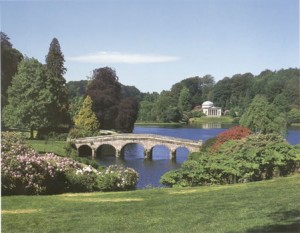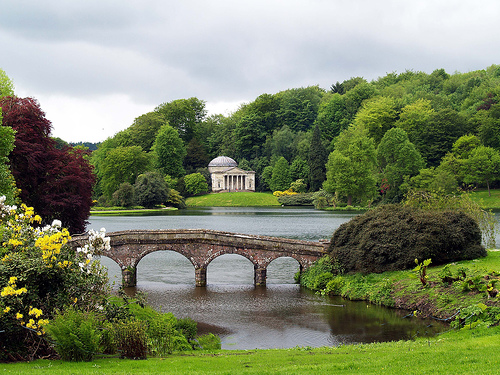Ten Tips for B&B owners Ask yourself if you really have the skills required for the job. Are you approachable, reliable, helpful and friendly. … Read more »
Here we are offering <accommodation near Stourhead>, one of the National Trust’s most visited places and despite often visiting ourselves I’ve never thought about looking into the history and importance of these gardens in any depth. But as I so often find myself suggesting to guests that they visit the gardens at Stourhead I thought it time to do a bit of homework and find out more about the place.
The name comes as the source of the river Stour (hence Stourhead) is at Six Wells Bottom, the valley just above the gardens, the spot is marked by St Peter’s Pump. This ancient 14th century pumping house, this was originally part of Bristol’s water supply and stood near St. Peter’s Church in Bristol and well worth a visit in itself. Details of a walk around the valley can be found at http://www.communitywalk.com/stourhead_circular_november_2011/map/736234#0004K:F7
The gardens were designed by Henry Hoare II between 1741 and 1780 built in a Classical 18th century design inspired by several Italian paintings. The manmade lake at the centre of the garden was created by damming the small stream, and this is surrounded by a series of classical buildings. Temples to Flora (1745), the grotto (1748) and a miniature replica of the Pantheon in Rome (1754), a five-arched bridge (1762) and the Temple of Apollo (1765), the design based on the legendary journey of the founder of Rome – Aeneas. This brilliant Arcadian design is a fine example of an English Landscape garden, the idea being to create an idealized version of classical antiquity. At the time French inspired formal gardens were the norm, so the idea of a garden in the landscape celebrating nature was quite radical. Details of the opening times etc. can be found http://www.nationaltrust.org.uk/stourhead/
Just as you enter the gardens you can see on the right the elevated Bristol Cross. This medieval cross built in 1373 was initially guilded and housed the statues of Edward III, Edward IV, Henry II and King John. It has been altered and repaired and been honoured with Statues of Charles I, Elizabeth I, Henry VI and James I. It found its way from Bristol to Stourhead in 1768 where it now stands as an ornament.
However Stourhead is also about the great collection of trees, between 1791 and 1838 Sir Richard Hoare, the third owner, removed many of the fir trees replacing them with many imported specimens from America including two tulip trees, handkerchief trees and some swamp cypresses. This inspirational planting all helps enrich the viewing experience and gives the garden its outstanding autumn colour which are so splendidly reflected by the waters of the lake. Currently the tallest English Oak in Britain is at Stourhead measuring 40.4 metres/132.5 feet. In the spring the collection of Rhododendrons, Magnolias and Azaleas surrounding the lake are also spectacular.
The head gardener, Alan Power, has been heard on BBC Radio 4. When being interviewed by Eddie Mair his description of what he saw at Stourhead so enchanted the listeners that the programme was inundated with requests to hear more. Consequently every year the PM programme interviews Alan and we’re all able to share his love of the garden he nurtures. You can listen to Alan on the BBC blog http://www.bbc.co.uk/blogs/pm/2010/11/stourhead_1.shtml
You might also like…
An overnight break on the journey to Cornwall, a springtime visit to Stourhead,… Read more »

